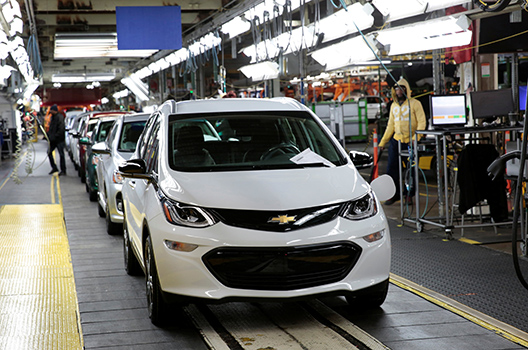 European Commission President Jean-Claude Juncker and European Union Trade Commissioner Cecilia Malmström will meet US President Donald J. Trump at the White House on July 25 in an attempt to calm tensions that are roiling transatlantic trade ties.
European Commission President Jean-Claude Juncker and European Union Trade Commissioner Cecilia Malmström will meet US President Donald J. Trump at the White House on July 25 in an attempt to calm tensions that are roiling transatlantic trade ties.
Here’s what you need to know ahead of that meeting.
How much trade does the United States do with the European Union?
According to the United States Trade Representative, the United States and the European Union (EU) traded $686 billion worth of goods and $407 billion worth of services, for a trade total of $1.1 trillion in 2016. The United States exported $270 billion worth of goods and $231 billion worth of services to the EU in 2016, while importing $416 billion in goods and $176 billion in services.
The EU was the United States’ largest export partner in 2016, accounting for 18.6 percent of all US exports. The top export categories to the EU included aircraft, machinery, pharmaceuticals, optic and medical instruments, and electrical machinery. The United States also exported more than $11.5 billion in agricultural products to Europe in 2016.
What does this mean for US jobs?
The US Department of Commerce estimated that trade with the EU supported 2.6 million jobs in the United States.
Doesn’t the United States have a trade deficit with the EU?
In 2016, the United States had a $92 billion trade deficit with the EU. This was down from $121.9 billion in 2015. The US trade deficit comes disproportionally from the trade in goods. The United States imported $147 billion worth of goods more than it exported to Europe in 2016.
How about trade in services?
Conversely, the United States has a trade surplus with the EU in services. In 2016, the United States provided $55 billion more in services to Europe than it imported.
What are the current tariffs in place for US products entering the EU?
Despite the attention surrounding tariffs, both the EU and the United States impose few customs duties on products entering their countries. According to a 2016 factsheet prepared by the European Commission, more than half of EU-US trade is not covered by tariffs on either side. The average tariff on either a US or a European good is 2 percent.
There are several high-profile exceptions, however. As Trump has highlighted, US cars and car parts are subject to a 10 percent EU tariff, while there is a 2.5 percent tax on European cars entering the United States. Experts note, however, that the tendency to ship European auto parts to US assembly plants means that only a small fraction of US car imports are actually subject to the EU tariff.
The United States has also put prohibitively high tariffs on EU goods, including a 350 percent tax on imported tobacco and 130 percent for peanuts. European trucks and trains are hit with higher US tariffs (25 percent and 14 percent, respectively) versus US exports to the EU (10 percent and 1.7 percent, respectively).
What started the current trade tension?
On March 1, Trump announced his intention to introduce new tariffs—25 percent on steel and 10 percent on aluminum—in an effort to bolster domestic production of both products. It remained unclear whether the EU, Canada, or Mexico would be subject to these new tariffs, but the president confirmed on May 31 that they would.
How did the EU respond?
Following Trump’s announcement, the EU announced retaliatory measures, which went into effect on June 22. These included new tariffs on agricultural products (corn, kidney beans, rice, peanut butter, orange and cranberry juice), whiskey, cigars and tobacco, cotton clothing, steel, iron, aluminum, and motorcycles.
And what did Trump do?
Trump responded on June 22 to these countermeasures by threatening to raise the United States’ 2.5 percent tariff on European automobiles to 20 percent. These threats reportedly caused the European Commission to send a letter to the US Department of Commerce, informing it that the EU was preparing more than $300 billion in additional tariffs if the United States raised its automobile tariffs.
David A. Wemer is assistant director, editorial at the Atlantic Council. Follow him on Twitter @DavidAWemer.
Image: A Chevrolet Bolt EV vehicle is seen on the assembly line at General Motors Orion Assembly in Lake Orion, Michigan, U.S., March 19, 2018. Photo taken March 19, 2018. (REUTERS/Rebecca Cook)
